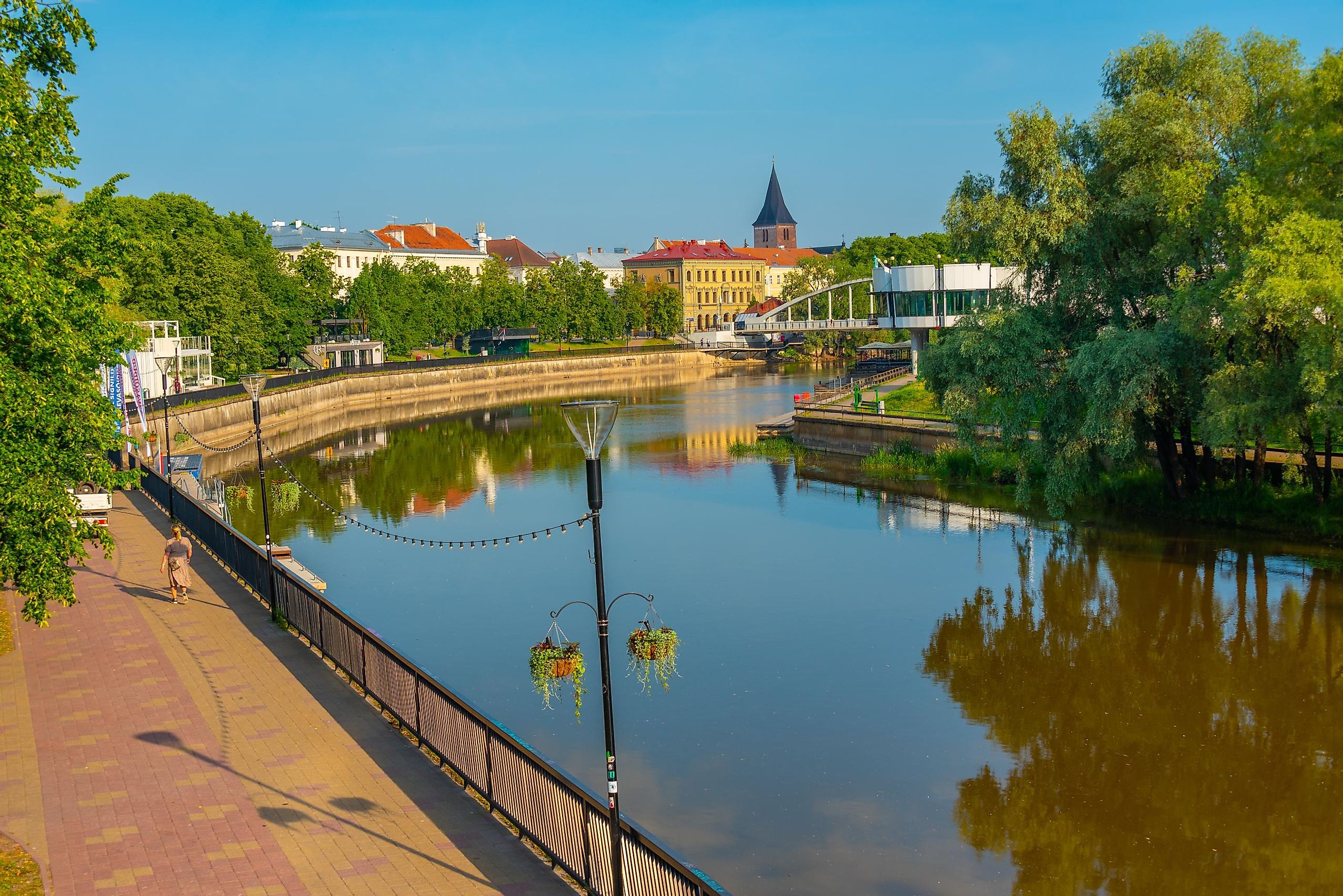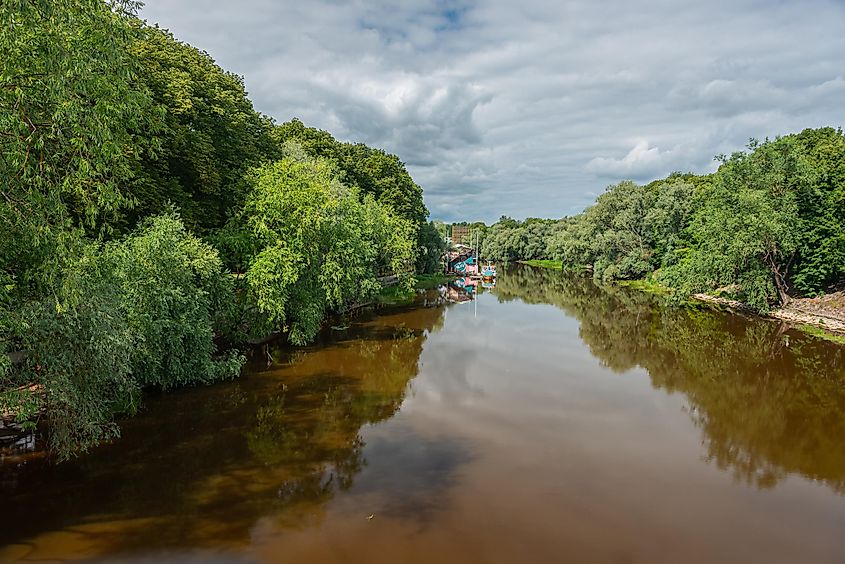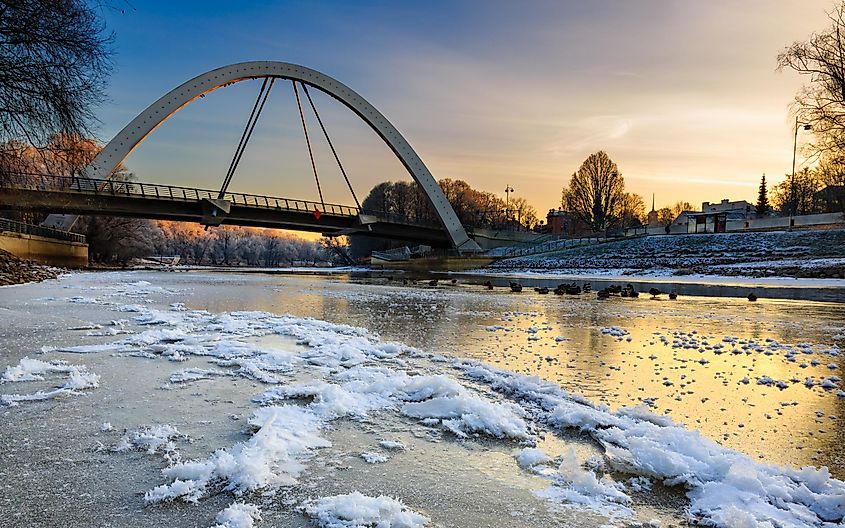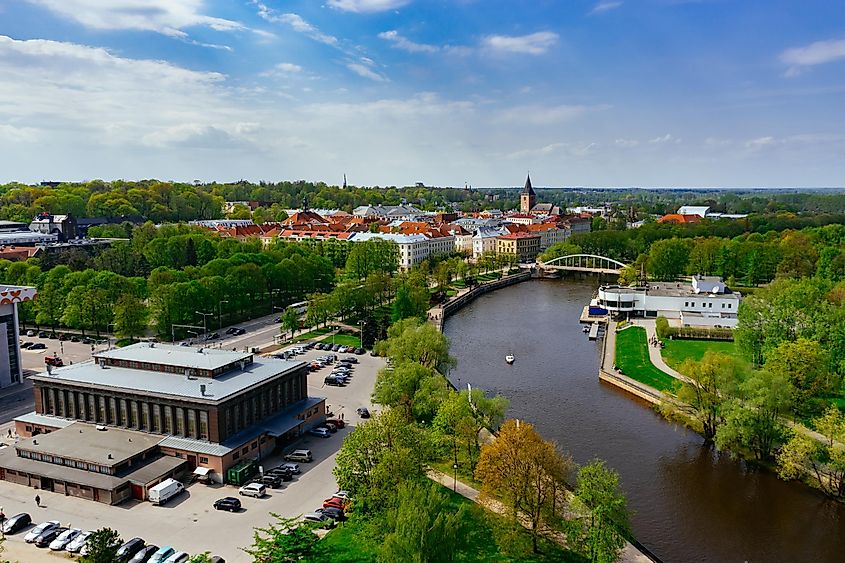
Emajogi River
While short in length at only 62 miles, the Emajogi River is the only completely navigable river in the Baltic nation of Estonia. As such, the Emajogi, sometimes called the Suur Emajogi to differentiate it from another Estonian river, has long been an important commercial waterway, especially for the city of Tartu. Today’s Emajogi River is also a recreational waterway for Estonians, and it passes through the Lake Peipus Nature Reserve as well. For modern Estonians, as with the various peoples who have called the Baltic region home over the centuries, the Emajogi River holds both practical and symbolic importance.
Source, Mouth, and Tributaries

The Emajogi River begins in Lake Vortsjarv, a shallow, swampy lake that covers about 104 square miles in south-central Estonia. The Emajogi then flows on an eastward path for about 62 miles until emptying into Estonia’s largest lake (and Europe’s fifth largest lake), the 1,373 square mile Lake Peipus, which forms part of the nation’s border with Russia. Twelve tributaries—the Pedja, Laeva, Amme, Koosa, Kavilda, Elva, Ilmatsalu, Porijogi, Mudajogi, Luutsna, Ahja, and Agali—flow into the Emajogi, which is generally 100 to 325 feet wide and 6 to 12 feet deep throughout its journey. The river’s drainage area covers about 3850 square miles or roughly 22% of Estonia’s total territory.
Landscape, Climate, and Wildlife

Other than the more hilly southern section of Estonia (to the south of the Emajogi River), the nation as a whole is very low and flat in relation to sea level. Due to this low, flat landscape, marshland typically runs along both banks of the Emajogi. The region has a cool, four-season climate, with average highs of about 63 degrees Fahrenheit in July and about 18 degrees in February. All species of freshwater fish native to Estonia have been found in the Emajogi and its connected waters, including bullheads, loaches, and asps. The river and its adjacent marshlands support ducks, geese, swans, and cranes, as well as beavers and other small mammals and amphibians.
Commercial History
The Emajogi River has been an important trade route since at least the Middle Ages when it connected the trade cities of the Hanseatic League in northern Europe to cities such as Novgorod and Pskov in what is now Russia. While the river facilitated east-west trade, the surrounding marshlands long served as an obstacle to north-south trade routes. The lack of solid riverbanks makes bridging the river difficult, and even today, there are only ten bridges crossing the Emajogi—seven of which are located within the city of Tartu. The Emajogi’s full-length navigability was further improved by a straightening of the channel in the 1920s, as well as ongoing and frequent channel dredging operations.
Tartu, Estonia

Tartu, Estonia’s second-largest city, sits along the Emajogi River, about halfway between Lakes Vortsjarv and Peipus. It is the oldest city in the three Baltic nations, with a history stretching back at least 1,000 years and likely centuries longer. Built on a site where the marshy Emajogi can more easily be forded or bridged, Tartu became both a north-south and east-west commercial gateway for the entire region. This key city has passed through the control of many powers, including Germany, Poland, Russia, and Sweden, and has been Estonia’s “second city” since its independence from the USSR in 1991. Home to about 100,000 people today, Tartu is known as a hub of Estonian cultural and intellectual life.
Because of its importance as a trade route, numerous nations and empires have laid claim to both the Emajogi River and its key city of Tartu over the past 1,000-plus years. Today the river is securely part of Estonia and an important element of its national identity. The Emajogi continues to serve as a commercial highway, but it is also an excellent vantage point for taking in the beautiful landscapes and abundant wildlife surrounding the river.











